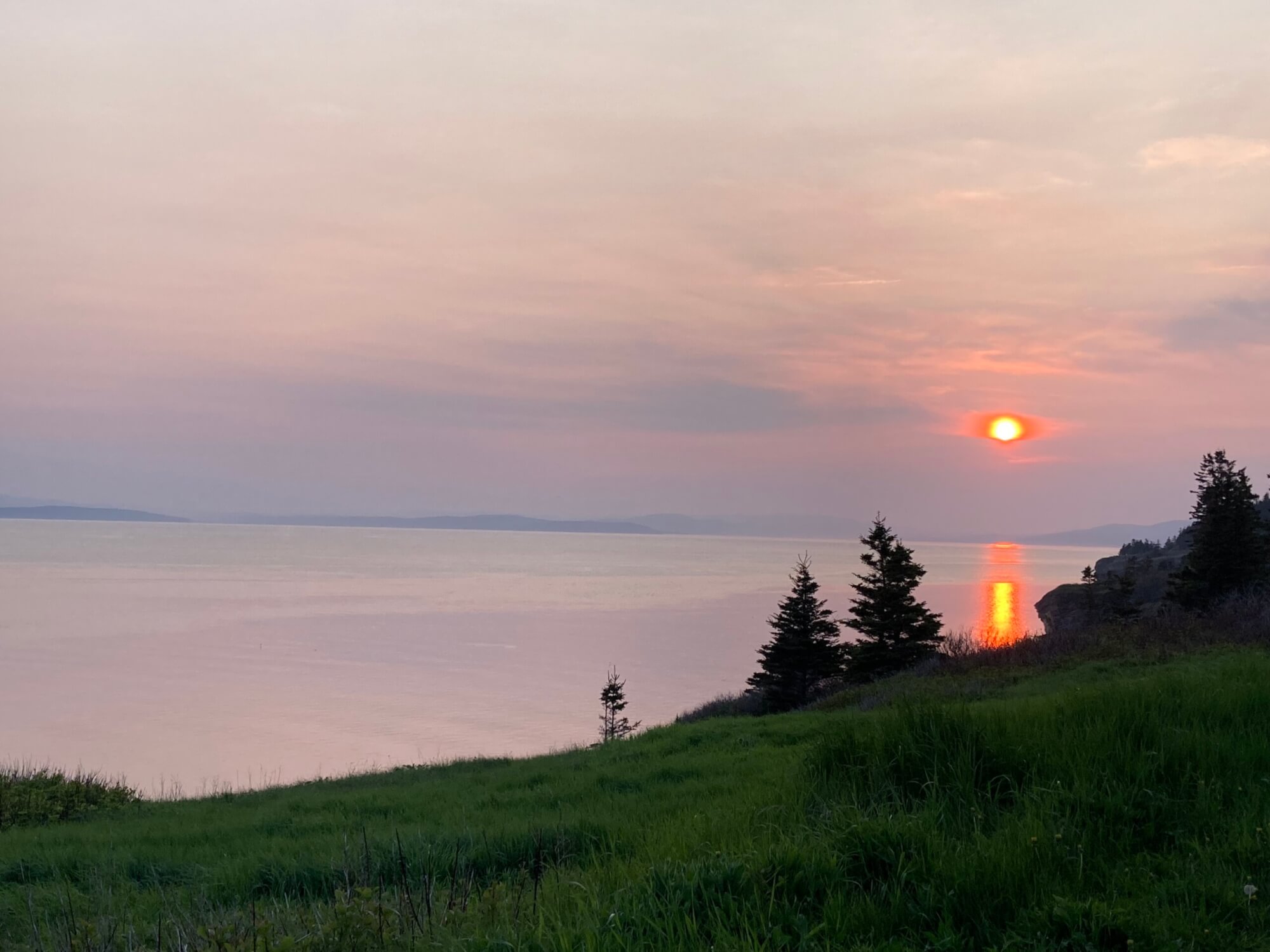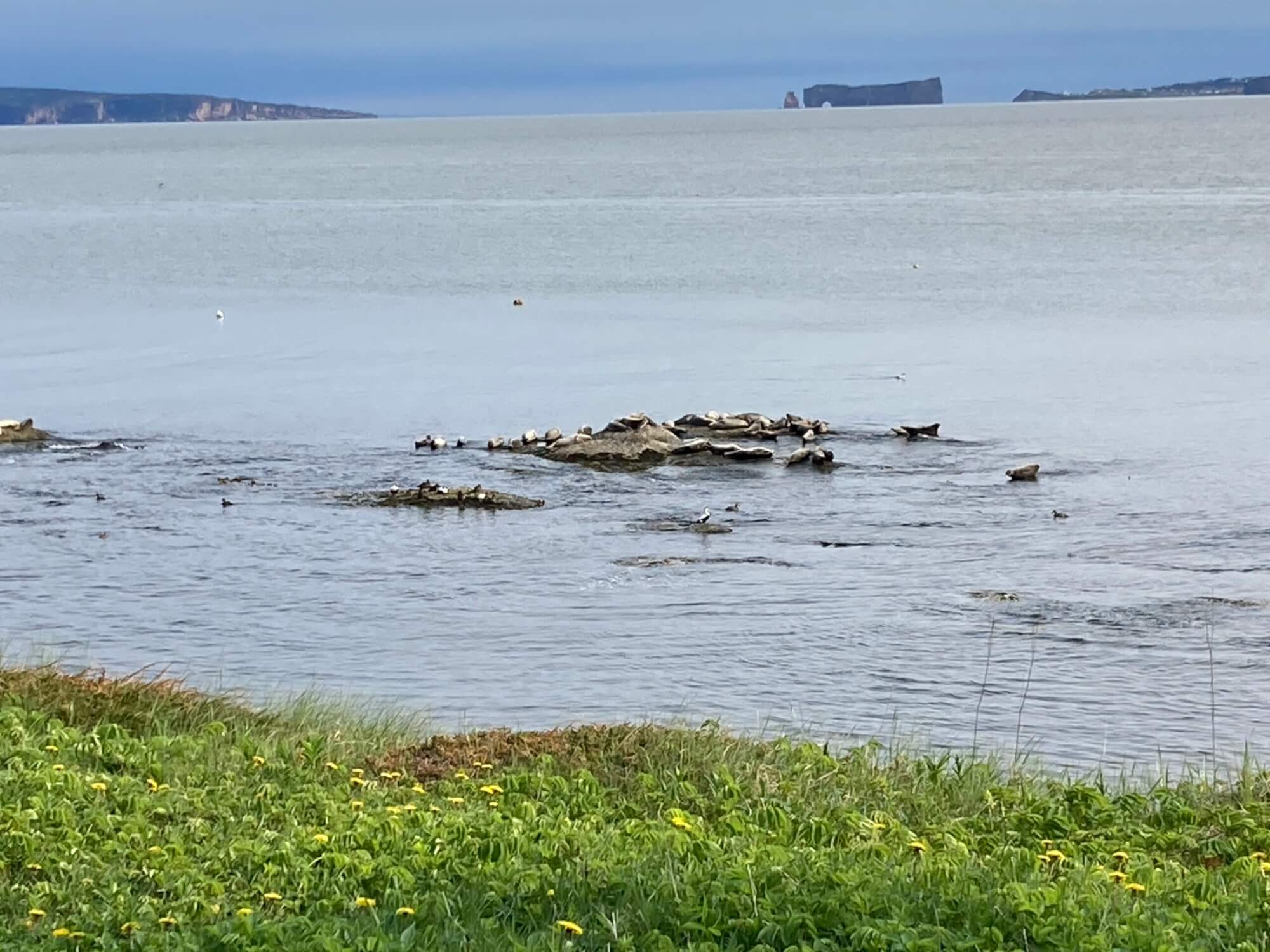This week, large rorquals were present all around the gulf. A blue whale made an appearance near Sept-Îles, minke whales were swimming in Gaspé, while several humpbacks and a few fin whales were reported in both these areas. Just like the start of the season, the estuary was calm the past few days. Nevertheless, there were the ever-faithful belugas, a few minke whales, harbour porpoises and seals.
From harbour porpoises to minke whales… not to mention a blue whale!
In Saint-Irénée, the beluga season has gotten off to a good start for local residents who scan the open sea in search of these white whales. “For the past few days we’ve been seeing several a day, maybe seven or eight,” mentions one observer. The day before yesterday, we went for a walk on the railroad tracks and we saw porpoises and belugas with their young.”
In the sector encompassing Tadoussac, Les Bergeronnes and Les Escoumins, minke whales, belugas and seals have been swimming in the cold St. Lawrence waters, but still no sign whatsoever of any large rorquals over the last week. While some members of the community are concerned about this, others are content with the few sightings they are able to make, while still holding out hope for the return of the giants in the days to come. Meanwhile, other observations have been pouring in: “A harbour seal in the ‘banana’ position off the dunes yesterday,” “a harp seal and about fifteen harbour porpoises in front of Mer et Monde,” “a minke whale near the Marine Environment Discovery Centre,” “belugas, harbour seals and my first grey seal today.”
For a marine mammal enthusiast in Franquelin, there don’t seem to be as many whales as in previous years, though he remains hopeful that he might get to see some large whales in the coming days or weeks. A regular observer shares some of her encounters with marine mammals. “Two minke whales observed from shore in Franquelin. And far offshore, a bright white spot really reminded me of a moving beluga, but given the distance I couldn’t be entirely certain, but it definitely wasn’t a ‘beluwave’!” Indeed, with their shape and white backs, belugas are often mistaken for waves. For the trained eye, cetacean movements are quickly distinguished from those of the waves. During an outing, this pleasure boater also had the opportunity to see a minke whale, a harbour porpoise and four harp seals.
In Sept-Îles, no fewer than four humpback whales were observed, including one accompanied by a calf. The tally for marine fauna in the region continues to grow: three fin whales, a blue whale, several minke whales and belugas. The region was rich in marine mammals, though some observers might point out that this season is not exceptional, either; in fact, cetaceans are likely even fewer in number than in other years. A little farther east, in Havre-Saint-Pierre, pinnipeds and a minke whale round out the picture on the North Shore over the last week.
Gaspé
Whales are still very present and active in Gaspé Bay. About a dozen humpbacks show their caudal fins to sea gazers while their large, balloon-shaped spouts blur the horizon. The presence in the area of multiple minke whales and two fin whales delights those who are lucky enough to see them. At Pointe Saint-Pierre, some fifty harbour seals were resting on the rocks on June 9. A few days later, on June 13, blowing humpbacks were observed from Cap-des-Rosiers.
A herd of belugas was seen from the shores of L’Anse-au-Griffon, and off Grande-Vallée a few days after that. Unaccustomed to seeing these cetaceans in the region, the Whales Online subscriber wondered about her observation. “There must have been around 20, including a few individual stragglers. This is the first time we’ve ever seen belugas in our area.” The range of this endangered species stretches from the St. Lawrence Estuary to the Gulf of St. Lawrence. For GREMM scientific director Robert Michaud, it is normal to see this species in the spring in the Gaspésie, though less so in June. Fortunately, according to the observer, the group of belugas seemed to be heading upstream! During a day in the estuary, a mariner crosses paths with belugas off Matane and a minke whale near Saint-Nicholas Bay.
Observation map
This week marks the return of the weekly sightings map! A special thanks to all our collaborators who share their marine mammal encounters with us every week. If you have a particular story you would like to tell or a photo that we could publish, don’t hesitate to write us at [email protected]. Interested in sharing your observations and contributing to citizen science? Use the marine mammal sighting entry tool.
Weekly sighting map
These data were reported by our network of observers. The observations give a rough idea of the presence of whales, but do not in any way represent the true distribution of cetaceans in the St. Lawrence. Enjoy!
Click on the whale or seal icons to see the species, number of individuals observed, additional information or photos of the sighting. To zoom in on the map, click on the icon in the upper right corner. The map works well on Chrome and Firefox, but less so on Safari.
To display the list of observations, click on the icon in the upper left corner.









